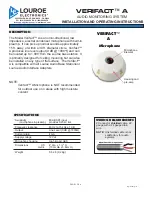
11
Key Features of WiDIF-HP
e
e
pander
ponse
nce
occur
s are
oding.
ances
in the
System
P)
ess
he
cy
re
Stable Wireless Operation Highly Resistant to Interference
Compared to conventional analog systems, the DWX series employing the WiDIF-HP format provides
significantly better rejection of noise, third-order intermodulation, same-frequency interference and other
forms of interference. The improvement is on the order of 20 dB or more (more than 10 times better in terms of
reception voltage level). This results in improved operation stability.
Analog system
The D/U (Desired/Undesired) signal ratio will be the S/N ratio of the demodulated audio signal. Because
interference will be reproduced as noise, the higher the undesired signal level, the higher the noise will be in
the modulated signal. Typically, analog systems require a D/U signal ratio of 40 dB or more.
Digital wireless system
Provided that there are no errors, the audio signal quality will not be degraded. In the Sony digital wireless
system, an error does not occur provided the D/U signal ratio is 20 dB or more. Therefore sound quality will not
be impaired as long as this condition is met.
CH 4
CH 2
CH 3
CH 1
CH 1
FM modulation
Digital modulation
Spectrum
Spectrum
Analog system
usually needs
D/U > 40 dB
D/U > 20 dB
Error Free
Desired
Undesired
Desired
Undesired
* D/U ratio: Desired/Undesired ratio
The Sony DWX series of digital wireless microphones employing the WiDIF-HP format provides interference
rejection that surpasses conventional analog systems by 20 dB or more (more than 10 times better in terms of
reception voltage level), resulting in improved operation stability.
Technology












































